Hair Sectioning Device
Daly; Brian
U.S. patent application number 15/789355 was filed with the patent office on 2019-04-25 for hair sectioning device. The applicant listed for this patent is Brian Daly. Invention is credited to Brian Daly.
| Application Number | 20190116953 15/789355 |
| Document ID | / |
| Family ID | 66169227 |
| Filed Date | 2019-04-25 |
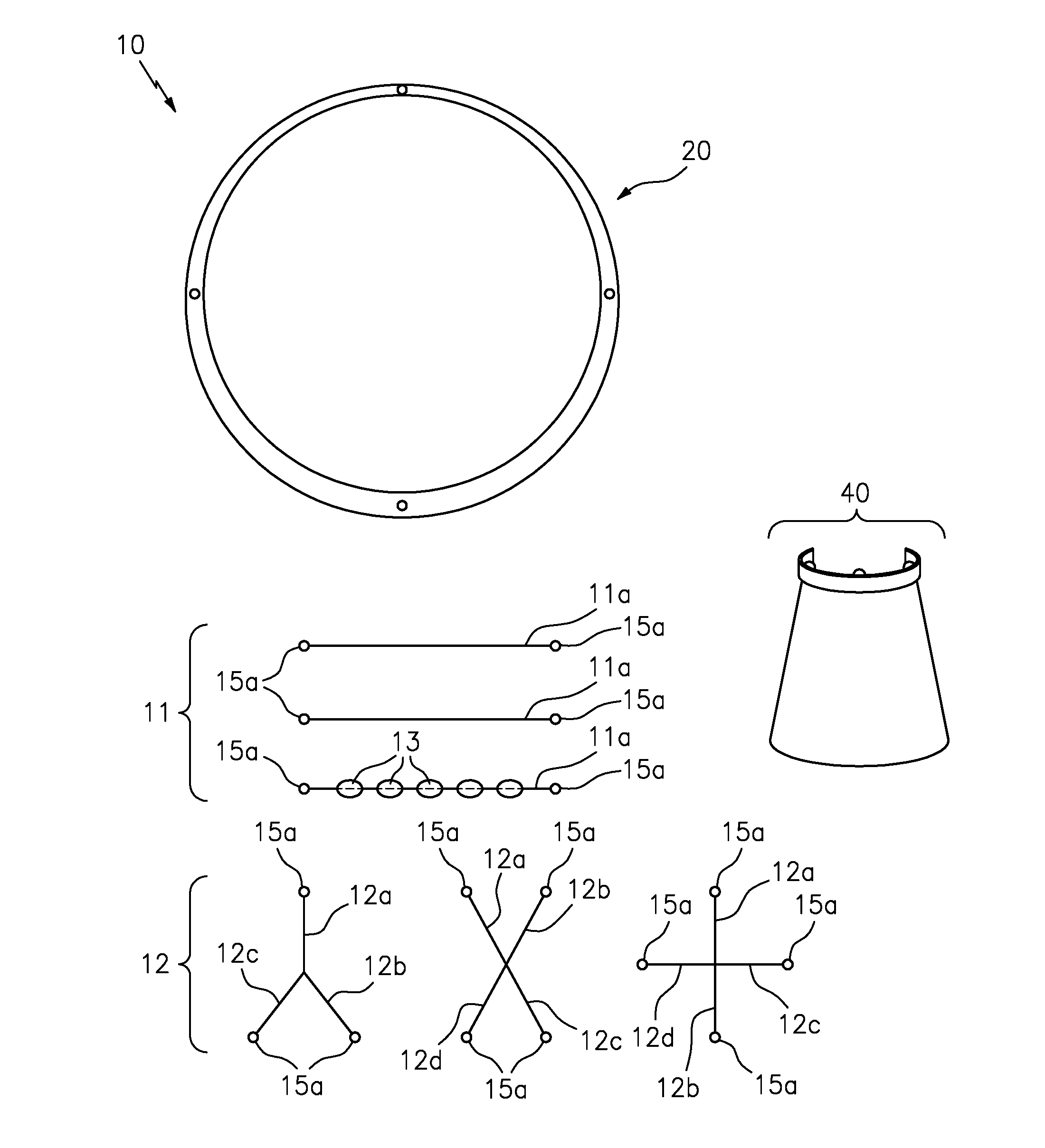
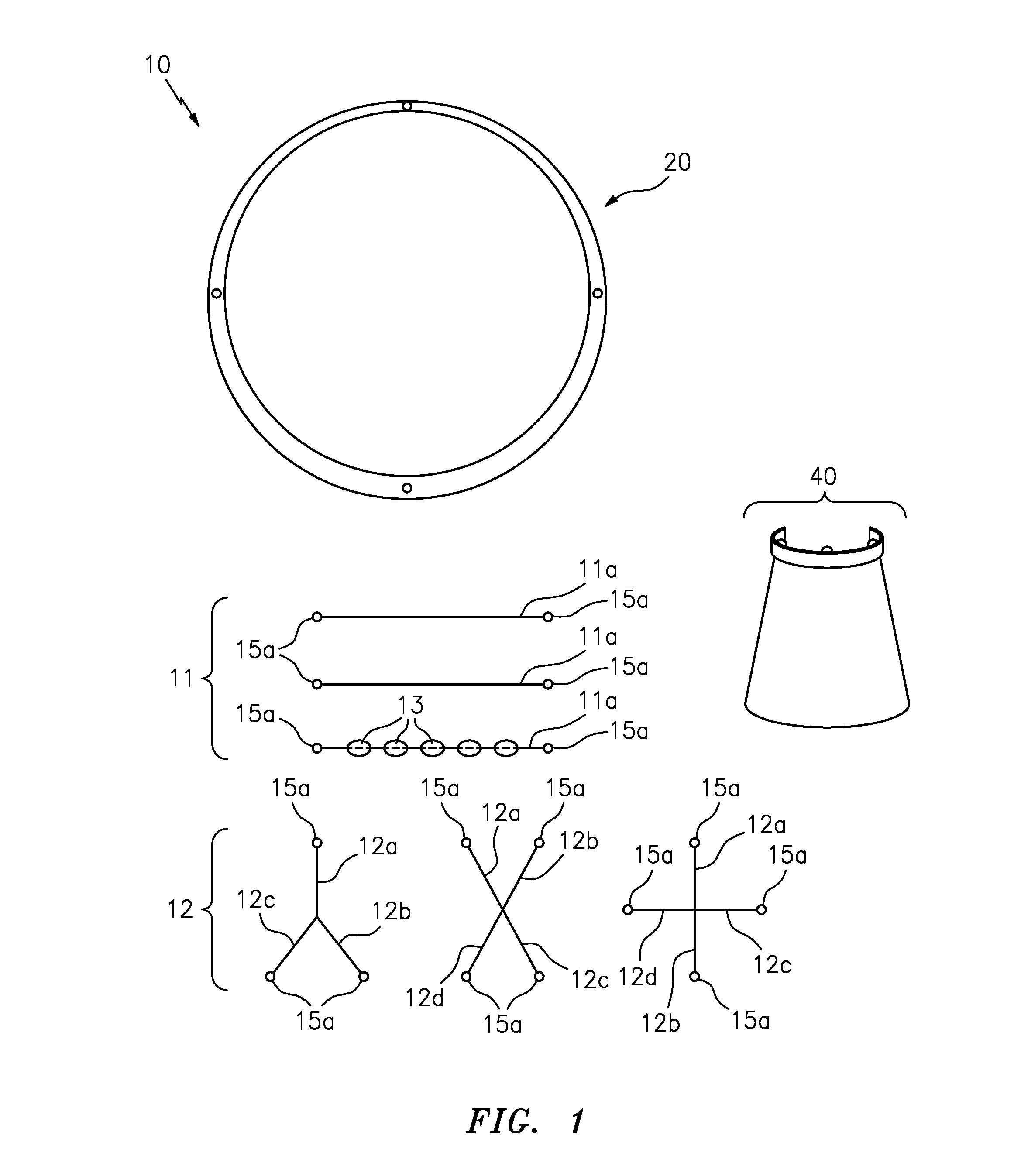
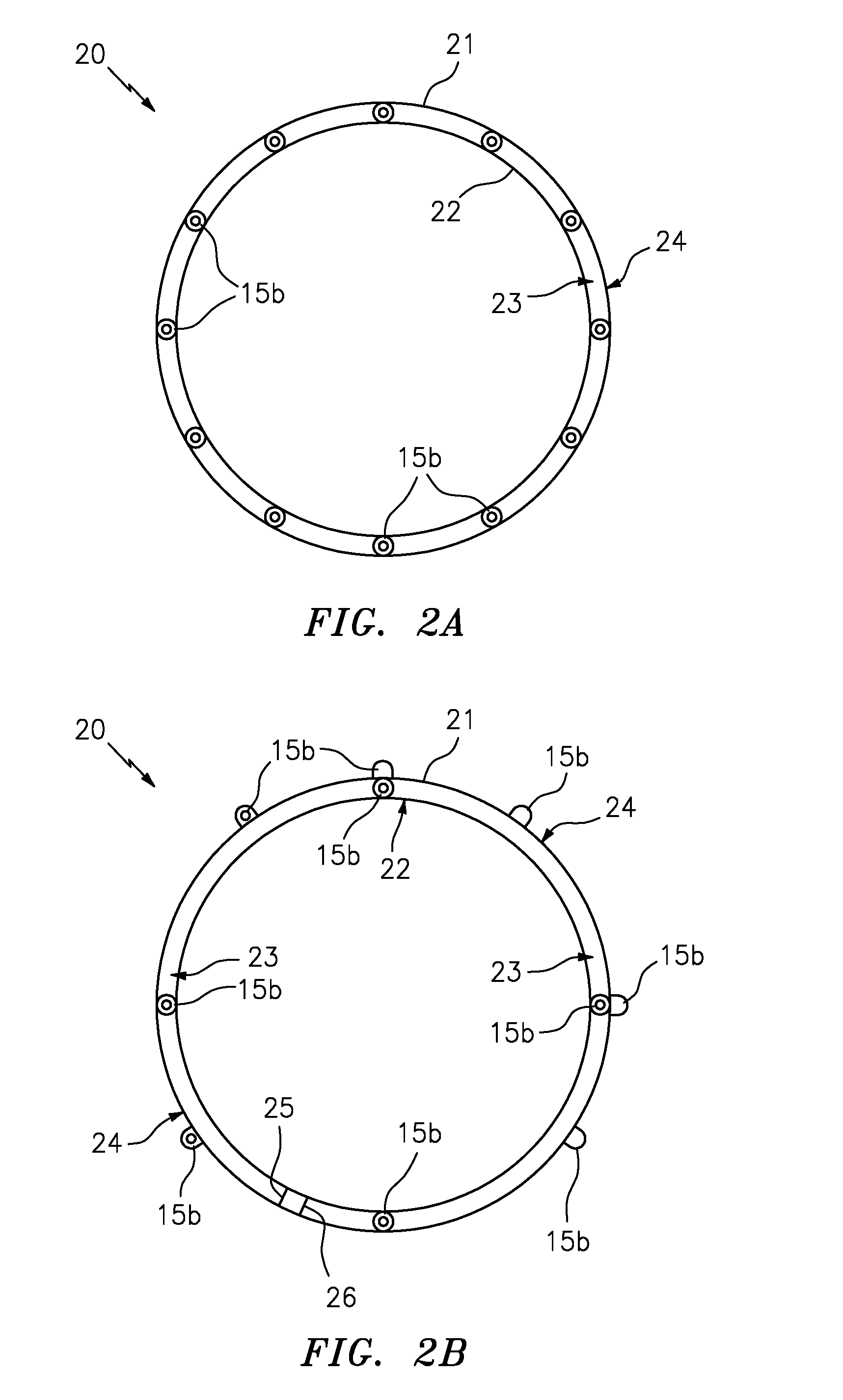
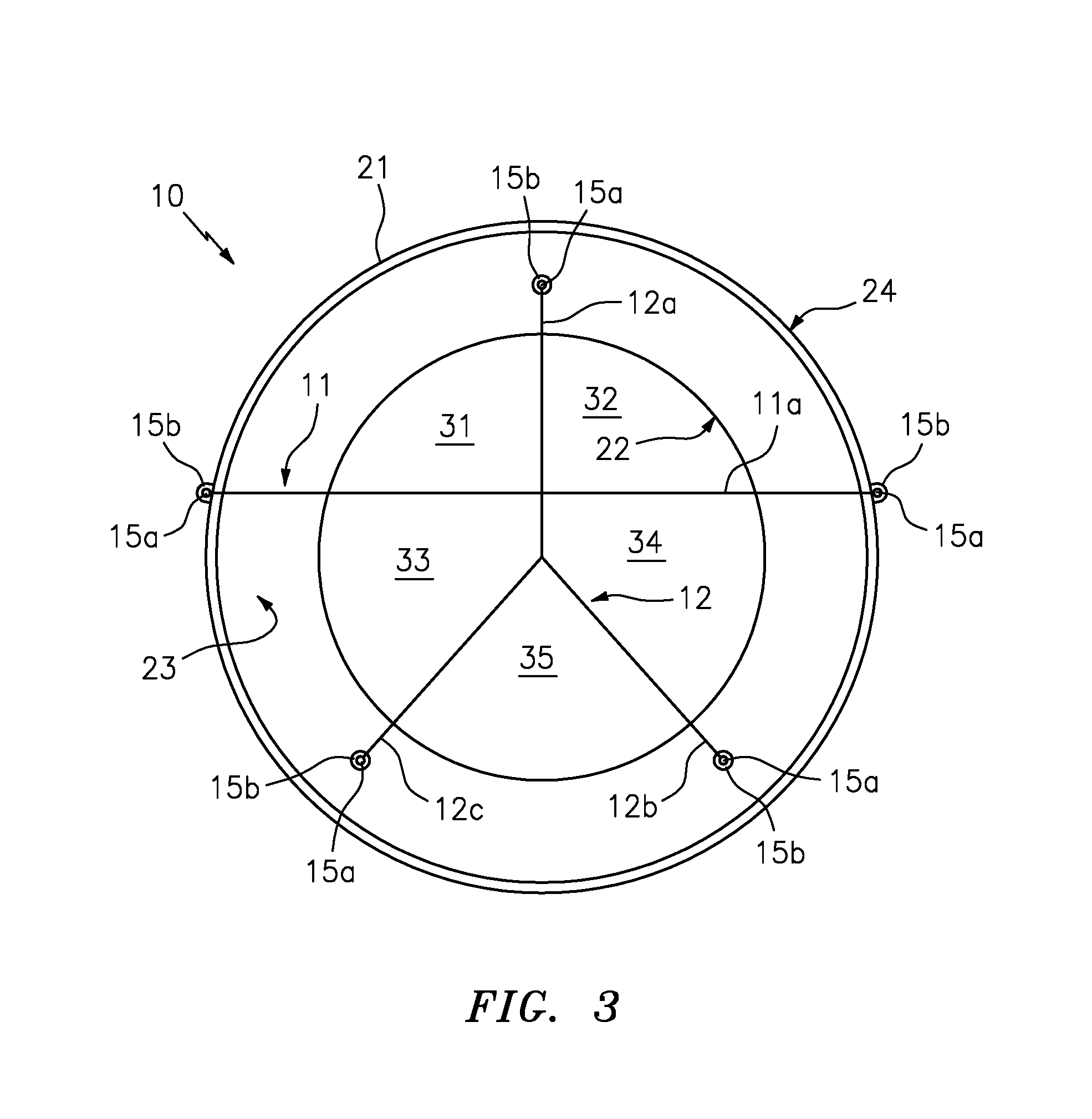
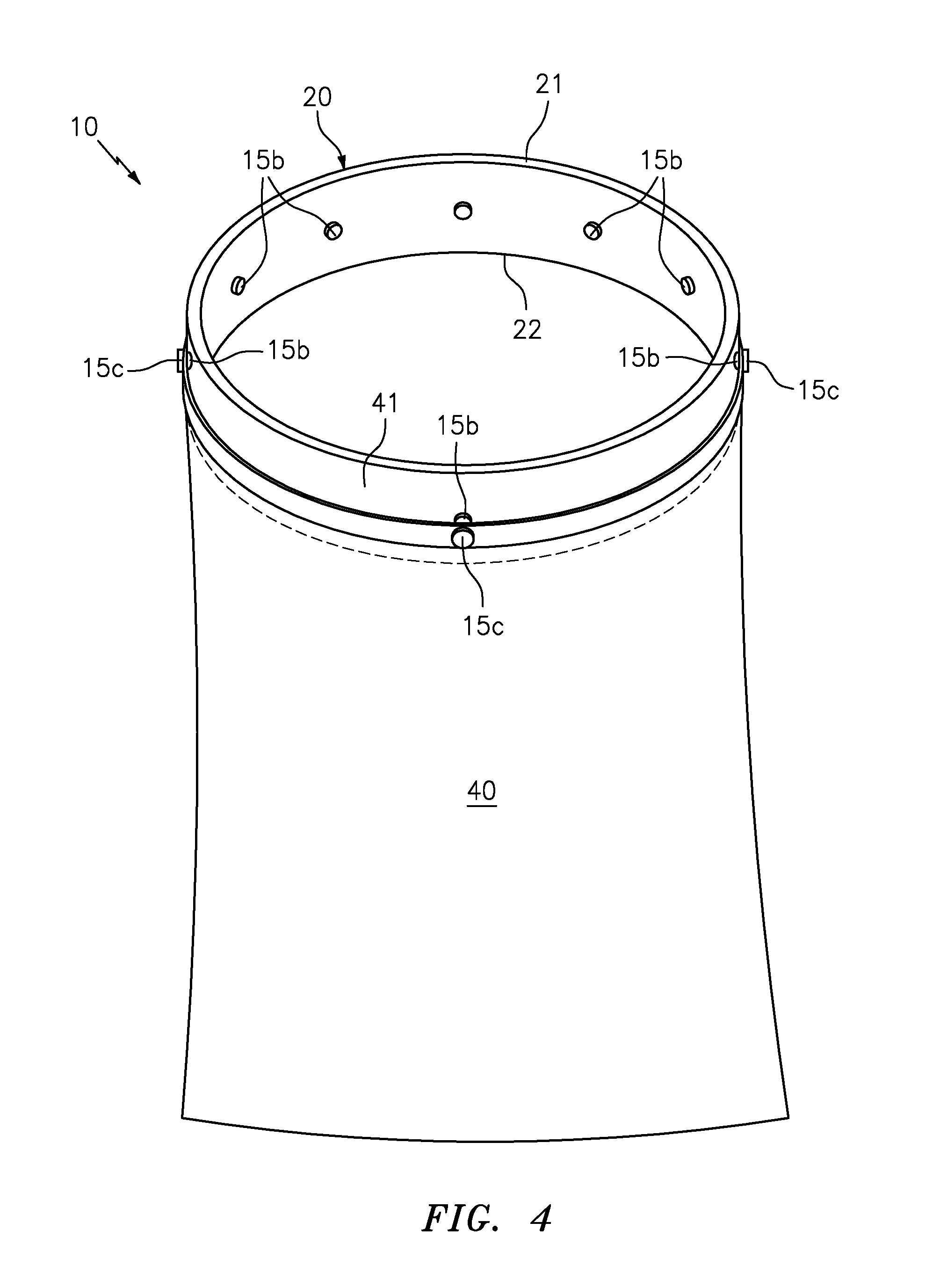
| United States Patent Application | 20190116953 |
| Kind Code | A1 |
| Daly; Brian | April 25, 2019 |
HAIR SECTIONING DEVICE
Abstract
A hair sectioning device includes a headband having a plurality of complementary connectors and a shape, size and construction material that is suitable for being worn about the head of a user. The device also includes a plurality of dividers that create a stencil having a plurality of user-defined sections for receiving the user's hair. At least one of the dividers including an elongated elastomeric cord having a pair of connectors located along each end thereof. Another of the at least one of the dividers includes multiple elongated elastomeric cords that are pre-arranged to form distinct shapes. Each of the elastomeric cords also including a connector for engaging the complementary connectors positioned on the headband.
| Inventors: | Daly; Brian; (Orlando, FL) | ||||||||||
| Applicant: |
|
||||||||||
|---|---|---|---|---|---|---|---|---|---|---|---|
| Family ID: | 66169227 | ||||||||||
| Appl. No.: | 15/789355 | ||||||||||
| Filed: | October 20, 2017 |
| Current U.S. Class: | 1/1 |
| Current CPC Class: | A45D 44/08 20130101; A45D 8/00 20130101; A45D 19/18 20130101; A45D 8/36 20130101 |
| International Class: | A45D 8/36 20060101 A45D008/36; A45D 19/18 20060101 A45D019/18 |
Claims
1. A hair sectioning device, comprising: a headband having a top edge, a bottom edge, an inside surface and an outside surface; a plurality of complementary connectors that are disposed along one of the inside surface and the outside surface of the headband; and a divider having an elongated member and a plurality of ends that are configured to selectively engage the headband, wherein the divider functions to create at least one user-defined section for receiving an entirety of a wearers hair.
2. The device of claim 1, wherein the divider comprises: a single elastomeric cord having a pair of connectors along a first and second end; and an outside diameter of between .1 and 1 centimeter, wherein the pair of connectors are configured to selectively engage the plurality of complementary connectors on the headband.
3. The device of claim 1, further comprising: a plurality of dividers, each of which including a single elastomeric cord having a pair of connectors along a first and second end, and an outside diameter of between 0.1 and 1 centimeter, wherein the pair of connectors of each of the plurality of dividers are configured to selectively engage the plurality of complementary connectors on the headband.
4. The device of claim 1, wherein the divider comprises: a single divider having a plurality of connected elastomeric cords and at least two ends; and a plurality of connectors that are positioned along each of the at least two ends, wherein each of the plurality of connected elastomeric cords includes an outside diameter of between 0.1 and 1 centimeter, and each of the plurality of connectors are configured to selectively engage the plurality of complementary connectors on the headband.
5. The device of claim 1, further comprising: a plurality of dividers, each having a two or more connected elastomeric cords and a plurality of ends; and a plurality of connectors that are positioned along each of the plurality of ends, wherein each of the elastomeric cords includes an outside diameter of between 0.1 and 1 centimeter, and each of the plurality of connectors are configured to selectively engage the plurality of complementary connectors on the headband.
6. The device of claim 1, wherein the headband includes a uniform circular shape that is constructed from an elastomeric material as a one-size-fits-all.
7. The device of claim 6, wherein the headband further comprises: a sweat absorbing material that is configured to absorb a hair chemical.
8. The device of claim 1, wherein the headband includes a first and second end that are configured to be removably secured together.
9. The device of claim 8, wherein the headband further comprises: a sweat absorbing material that is configured to absorb a hair chemical.
Description
TECHNICAL FIELD
[0001] The present invention relates generally to hair styling products, and more particularly to a device for sectioning hair.
BACKGROUND
[0002] The statements in this section merely provide background information related to the present disclosure and may not constitute prior art.
[0003] There are a variety of known devices available for styling, curling and straightening hair such as curling irons, straightening combs and flat irons, for example. During use, it is necessary for a user to arrange the hair into manageable portions through a process called layering wherein various sections of the user's hair are pulled back and/or tied up, while other sections are engaged by the device. As this process is done manually, it is not uncommon for some portions of the user's hair to be captured and straightened twice and for other sections to be missed entirely, thereby causing the final result to be less than perfect.
[0004] Likewise, when performing other actions, such as adding color highlights, for example, it is also necessary to perform the above described layering procedure and to overcome the above noted issues. For these reasons, many users do not attempt to perform such services on their own hair, choosing instead to visit a salon and engage the services of a professional stylist.
[0005] Accordingly, it would be beneficial to provide a hair sectioning device having a plurality of dividers that can be configured to allow all of a user's hair to be easily and systematically layered, so as to eliminate the drawbacks described above.
SUMMARY OF THE INVENTION
[0006] The present invention is directed to a hair sectioning device. One embodiment of the present invention can include a headband having a shape, size and construction material that is suitable for being worn about the head of a user. The device can also include a plurality of dividers which can engage the headband to create a stencil having a plurality of user-defined sections for receiving the user's hair.
[0007] In one embodiment, at least one of the dividers can include an elongated elastomeric cord having a pair of connectors located along each end thereof. The connectors can engage complementary connectors positioned on the headband as desired by a user.
[0008] In one embodiment, at least one of the dividers can include multiple elongated elastomeric cords that are pre-arranged to form distinct shapes. Each of the elastomeric cords can include a connector that can also engage complementary connectors positioned on the headband as desired by a user.
[0009] This summary is provided merely to introduce certain concepts and not to identify key or essential features of the claimed subject matter.
BRIEF DESCRIPTION OF THE DRAWINGS
[0010] Presently preferred embodiments are shown in the drawings. It should be appreciated, however, that the invention is not limited to the precise arrangements and instrumentalities shown.
[0011] FIG. 1 is a perspective view of a hair sectioning device in a disassembled orientation that is useful for understanding the inventive concepts disclosed herein.
[0012] FIG. 2A is a top side view of the headband of the hair sectioning device, in accordance with one embodiment of the invention.
[0013] FIG. 2B is another top side view of the headband of the hair sectioning device, in accordance with one embodiment of the invention.
[0014] FIG. 3 is a top side view of the assembled hair sectioning device, in accordance with one embodiment of the invention.
[0015] FIG. 4 is a perspective view of the neck guard of the hair sectioning device, in accordance with one embodiment of the invention.
DETAILED DESCRIPTION OF THE INVENTION
[0016] While the specification concludes with claims defining the features of the invention that are regarded as novel, it is believed that the invention will be better understood from a consideration of the description in conjunction with the drawings. As required, detailed embodiments of the present invention are disclosed herein; however, it is to be understood that the disclosed embodiments are merely exemplary of the invention which can be embodied in various forms. Therefore, specific structural and functional details disclosed herein are not to be interpreted as limiting, but merely as a basis for the claims and as a representative basis for teaching one skilled in the art to variously employ the inventive arrangements in virtually any appropriately detailed structure. Further, the terms and phrases used herein are not intended to be limiting but rather to provide an understandable description of the invention.
[0017] FIGS. 1-4 illustrate one embodiment of a hair sectioning device 10 that is useful for understanding the inventive concepts disclosed herein. In each of the drawings, identical reference numerals are used for like elements of the invention or elements of like function. For the sake of clarity, only those reference numerals are shown in the individual figures which are necessary for the description of the respective figure. For purposes of this description, the terms "upper," "bottom," "right," "left," "front," "vertical," "horizontal," and derivatives thereof shall relate to the invention as oriented in FIG. 1.
[0018] As shown in FIG. 1, the device 10 can include a plurality of dividers 11 and 12, and a neck guard 40 that can function to engage a headband 20, so as to allow a user to separate their hair into any number of different sections.
[0019] In one embodiment, each of the dividers 11 can include a single elongated cord Ila having a connector 15a along each end. Likewise, each of the dividers 12 can include a plurality of elongated cords 12a-12d, for example, that are joined together to form any number of different shapes. Each of the cords 12a-12d can also include a connector 15a along a distal end.
[0020] In the preferred embodiment, each of the elongated cords will be constructed from a thin elastomeric material such as polyester crystal string cord, for example, and will have an outside diameter of between 0.1 and 1 centimeter. The use of a thin elastomeric cord allows the dividers to be stretched along the head of a wearer, to act as a stencil for separating the hair of the wearer's entire head into any number of different sections without leaving any gaps or redundancy.
[0021] Although illustrated and described with regard to particular shapes, sizes and construction materials, those of skill in the art will recognize that any number of other shapes, sizes and/or construction materials are also contemplated. Moreover, in various embodiments, one or more of the elongated cords can include a plurality of smooth beads 13 along a length thereof. The beads 13 including a smooth outer surface that allows the cord(s) to roll along the head of the wearer during initial positioning and removal. Such a feature prevents the wearer's hair from becoming entangled with the divider and/or disrupting the shape of the hair.
[0022] As shown best in FIG. 2A, one embodiment of the headband 20 can be formed as a continuous band member having parallel top and bottom edges 21 and 22 which define an inner surface 23 intended for circumferential fitting engagement with the head of a wearer, and an outer surface 24 opposite the inner surface 23.
[0023] In the preferred embodiment, the headband 20 can constructed from any number of elastomeric materials such as spandex and nylon, for example, so as to be suitable for engaging a human head in a one-size-fits-all manner. Additionally, the elastomeric fabric can be coated with, or covered by any number of sweat absorbing materials such as cotton terrycloth, for example. Such a feature can allow the headband to absorb excess hair dye and other such chemicals during use, thereby protecting the user from excessive exposure to such chemicals. Of course, other embodiments are contemplated wherein the headband can include shapes and construction materials that are different from those described above.
[0024] As shown, a plurality of complementary connectors 15b can be disposed along the inner surface 23 of the headband. In the preferred embodiment, twelve such connectors can be arranged in a clock-like orientation (e.g., at the universally recognized 1-12 o'clock positions), and can function to engage the connectors 15b of the above described dividers.
[0025] As described herein, the terms connector and complementary connector can be used interchangeably to include any number of different elements capable of securing two items together in a nonpermanent manner. Several nonlimiting examples include opposing strips of hook and loop material (i.e. Velcro.RTM.), magnetic elements, and compression fittings such as snaps, hooks and buttons, for example. Each connector and complementary connector can be permanently secured to the illustrated portion of the device via a permanent sealer such as glue, or stitching, for example.
[0026] Although described as including a continuous body with connectors positioned along the inside surface at specific positions, other embodiments are contemplated. For example, FIG. 2B illustrates one embodiment of the headband 20 having two ends 25 and 26 that can be removably joined together via additional connectors.
[0027] To this end, the headband 20 can also include complementary connectors 15a that are positioned along both the inside facing surface 23 and the outside facing surface 24. As shown, the location of the complementary connectors along the respective surfaces can be identical to each other, or can be at different locations so as to facilitate receiving dividers of different shapes and sizes. As such, each of the complementary connectors can be positioned at locations on the headband 20 to be engaged by a specifically shaped divider 12.
[0028] As shown in FIG. 3, one or more of the dividers 11 and/or 12 can be secured onto the headband 20 via the connectors 15a and 15b as described above, so as to allow the individual cords to form a user-defined stencil having a plurality of distinct sections 31-35, for example. Next, the headband can be positioned onto the head of a user, and all of the user's hair can be positioned within one of the sections. When so positioned, the wearer or their stylist can perform a treatment (e.g., hair coloring, curling or straightening, for example) in a systematic manner that ensures no portions of the wearers hair is missed or treated more than once.
[0029] As shown in FIG. 4, the device 10 can also include a waterproof neck guard 40 having an elongated body with a plurality of connectors 15c along a top end 41. Connectors 15c can engage the complementary connectors 15b on the headband and/or dividers in order to secure the neck guard 40 around a portion of, or an entirety of the circumference of the headband and wearers head.
[0030] To this end, the neck guard 40 can act in a similar manner to a salon styling cape to protect the wearers scalp, neck, skin and clothing from the chemicals involved in the treatment. In the preferred embodiment, the neck guard 40 can be constructed from a waterproof fabric, such as nylon, for example, and can include a length of between 10 and 24 inches.
[0031] As described herein, one or more elements of the hair sectioning device 10 can be secured together utilizing any number of known attachment means such as, for example, glue or compression fittings, among others. Moreover, although the above embodiments have been described as including separate individual elements, the inventive concepts disclosed herein are not so limiting. To this end, one of skill in the art will recognize that one or more individually identified elements may be formed together as one or more continuous elements, either through manufacturing processes, such as welding, casting, or molding, or through the use of a singular piece of material milled or machined with the aforementioned components forming identifiable sections thereof. Accordingly, in one embodiment, the device can include one or more dividers that are permanently connected to the headband to form one or more pre-defined sections. Such a feature being beneficial for producing hairstyles wherein the wearers hair is arranged to receive a color treatment that forms a distinct shape such as a logo, flag, sport (e.g., baseball, football, or soccer) or symbol (e.g., peace sign), for example.
[0032] As to a further description of the manner and use of the present invention, the same should be apparent from the above description. Accordingly, no further discussion relating to the manner of usage and operation will be provided.
[0033] The terminology used herein is for the purpose of describing particular embodiments only and is not intended to be limiting of the invention. As used herein, the singular forms "a," "an," and "the" are intended to include the plural forms as well, unless the context clearly indicates otherwise. It will be further understood that the terms "comprises" and/or "comprising," when used in this specification, specify the presence of stated features, integers, steps, operations, elements, and/or components, but do not preclude the presence or addition of one or more other features, integers, steps, operations, elements, components, and/or groups thereof. Likewise, the terms "consisting" shall be used to describe only those components identified. In each instance where a device comprises certain elements, it will inherently consist of each of those identified elements as well.
[0034] The corresponding structures, materials, acts, and equivalents of all means or step plus function elements in the claims below are intended to include any structure, material, or act for performing the function in combination with other claimed elements as specifically claimed. The description of the present invention has been presented for purposes of illustration and description, but is not intended to be exhaustive or limited to the invention in the form disclosed. Many modifications and variations will be apparent to those of ordinary skill in the art without departing from the scope and spirit of the invention. The embodiment was chosen and described in order to best explain the principles of the invention and the practical application, and to enable others of ordinary skill in the art to understand the invention for various embodiments with various modifications as are suited to the particular use contemplated.
* * * * *
D00000

D00001

D00002

D00003

D00004

XML
uspto.report is an independent third-party trademark research tool that is not affiliated, endorsed, or sponsored by the United States Patent and Trademark Office (USPTO) or any other governmental organization. The information provided by uspto.report is based on publicly available data at the time of writing and is intended for informational purposes only.
While we strive to provide accurate and up-to-date information, we do not guarantee the accuracy, completeness, reliability, or suitability of the information displayed on this site. The use of this site is at your own risk. Any reliance you place on such information is therefore strictly at your own risk.
All official trademark data, including owner information, should be verified by visiting the official USPTO website at www.uspto.gov. This site is not intended to replace professional legal advice and should not be used as a substitute for consulting with a legal professional who is knowledgeable about trademark law.